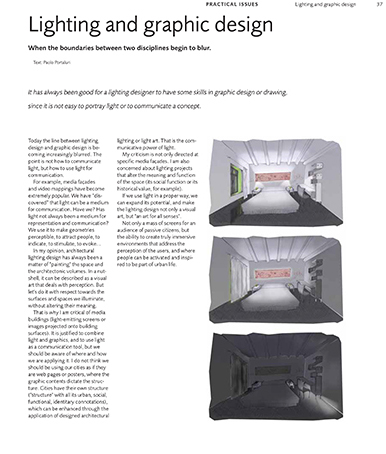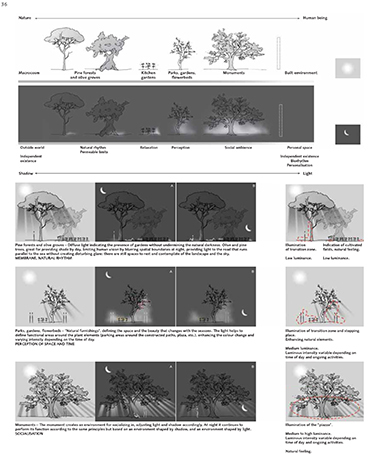LIGHT AND GRAPHIC DESIGN
WHEN THE BOUNDARIES BETWEEN TWO DISCIPLINES BEGIN TU BLUR
Article written for PLD Magazine n.92, April 2014.
It has always been good for a lighting designer to have some skills in graphic design or drawing, since it is not easy to portray light or to communicate a concept.
Today the line between lighting design and graphic design is becoming increasingly blurred. The point is not how to communicate light, but how to use light for communication.
For example, media façades and video mappings have become extremely popular. We have “discovered” that light can be a medium for communication. Have we? Has light not always been a medium for representation and communication? We use it to make geometries perceptible, to attract people, to indicate, to stimulate, to evoke...
In my opinion, architectural lighting design has always been a matter of "painting" the space and the architectonic volumes. In a nutshell, it can be described as a visual art that deals with perception. But let's do it with respect towards the surfaces and spaces we illuminate, without altering their meaning.
That is why I am critical of media buildings (light-emitting screens or images projected onto building surfaces). It is justified to combine light and graphics, and to use light as a communication tool, but we should be aware of where and how we are appliying it. I do not think we should be using our cities as if they are web pages or posters, where the graphic contents dictate the structure. Cities have their own structure ("structure" with all its urban, social, functional, identitary connotations), which can be enhanced through the application of designed architectural lighting or light art. That is the communicative power of light.
My criticism is not only directed at specific media façades. I am also concerned about lighting projects that alter the meaning and function of the space (its social function or its historical value, for example).
If we use light in a proper way, we can expand its potential, and make the lighting design not only a visual art, but "an art for all senses".
Not only a mass of screens for an audience of passive citizens, but the ability to create truly immersive environments that address the perception of the users, and where people can be activated and inspired to be part of urban life.







